We explain what the Paleozoic Era was, how it was divided and its general characteristics. In addition, the climate it presents, flora and fauna.
What was the Paleozoic era?
The Paleozoic Era on the geological time scale is also known as the Primary Era or simply as the Paleozoic. It is the first era of the Phanerozoic Eon (which begins 541 million years ago and ends in our present days), which is followed by the Mesozoic and Cenozoic. It is also known as the “Age of Invertebrates”.
The Paleozoic Era began 541 million years ago and ended about 252 million years ago . In other words, its duration was approximately 290 million years.
It ranges from the appearance of animals with shells or exoskeletons , to the appearance of the first amphibians and reptiles . For this reason, its name comes from the Greek words palaio (“old”) and zoe (“ life ”, “animal”), that is, it means “old life”.
previous era
The last geological era of the Proterozoic Eon is known by this name . It began 1,000 million years ago and ended approximately 542 years ago.
During this stage , the longest and most intense glaciation in the history of the planet took place , which turned it into a great snowball.
On the other hand, the first multicellular life forms appeared , including the first animals .
Paleozoic era division
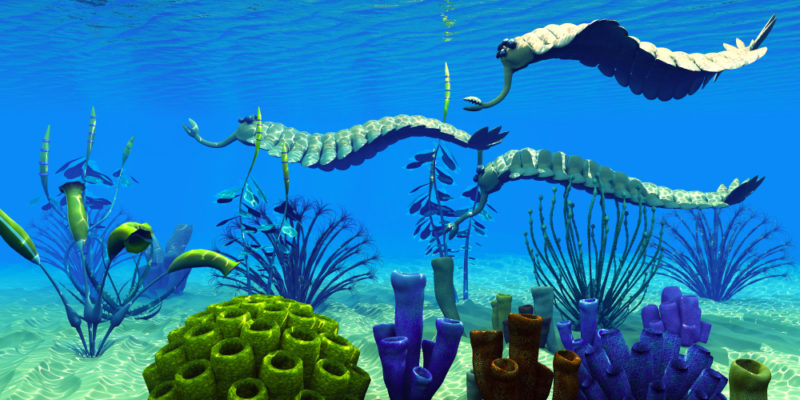
The Paleozoic Era was a long interval of time that is traditionally divided into six periods, each with a different number of epochs. As follows:
PALEOZOIC ERA
- Cambrian period. The oldest of all, began with the Era about 541 million years ago, and ended about 489.5 million years ago. It is divided into the Terreneuvian, Epoch 2, Miaolingianian, and Furorgian epochs.
- Ordovician period. It begins 485.4 million years ago and ends approximately 445.2 million years ago. It is divided into Lower or Early, Middle and Upper or Late Ordovician.
- Silurian period. It begins 443.4 million years ago and ends approximately 423 million years ago, dividing into the Llandovery, Wenlock, Ludlow and Pridoli epochs.
- Devonian period. It began 419.2 million years ago and ended about 372.2 million years ago, spanning three epochs: Lower or Early, Middle, and Upper or Late Devonian.
- Carboniferous Period . It begins 358.9 million years ago and ends 303.7 million years ago. It is divided into two suberas: Mississippian and Pennsylvanian (this division has different names in Europe ) that each comprise respectively the Lower or Early, Middle and Upper or Late epochs.
- Permian Period . The last period of the Era begins approximately 298.9 million years ago and ends approximately 254.2 million years ago, giving way to the Mesozoic Era . It is divided into the Cisuralian, Guadalupian and Lopingiense epochs.
Paleozoic geological features
The geological configuration of the Paleozoic was very different from that of today's world. The Era begins with the disintegration of the Pannotia supercontinent , at the end of the previous period.
In addition, as a consequence of the end of the previous ice age, the water level increased with the melting of the ice . Thus the continents were invaded by the seas .
This process throws up a small number of different continents or cratons : Laurentia, Baltica, Siberia, Kazakhstania and the Gondwana supercontinent, which throughout the Era were reunited in larger units.
Thus, at the end of the Paleozoic, the Pangea supercontinent was born, in which the largest portion of the planet's non-submerged surface was found. The rest of the orb was under the global ocean of Palanthassa.
Climate of the Paleozoic Era
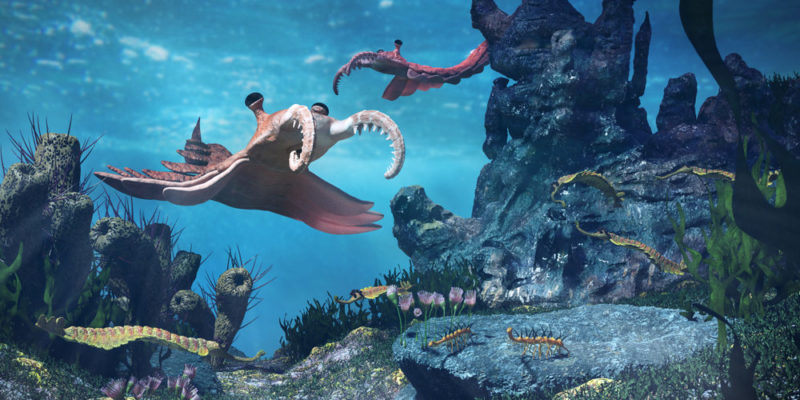
The climate of this Era begins with the end of an ice age, which is why it involves a slow heating process . However, it was countered by the southward shift of the continents (especially Gondwana).
Thus, at the end of the Lower Paleozoic, the Upper Ordovician glaciation occurred . It was short but intense and had adverse effects on life (mass extinction).
With the movement of the continents to the north and the melting of the ice masses, the waters rose in level. The climate began to warm again, but slowly and steadily throughout the middle Paleozoic.
Towards the end of the Age intriguing weather phenomena occurred . For one thing, carbon dioxide levels in the atmosphere decreased and were replaced by oxygen . This is due to the explosion of plant life in Carboniferous times.
The change in the composition of the atmosphere led to two glaciations much more intense than the Ordovician one . However, they hardly had an impact on life on the planet.
The Paleozoic ended with a supercontinent formed with arid regions in its interior . Falling seawater levels and climatic deterioration likely led to the Permian-Triassic Mass Extinction.
Flora of the Paleozoic Era
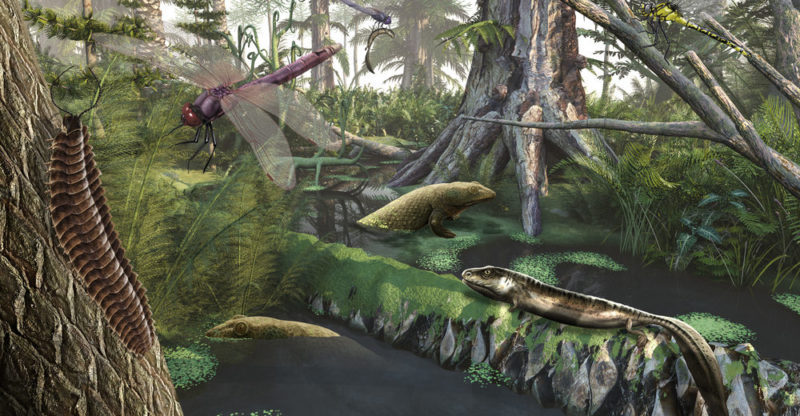
Life at the beginning of the Paleozoic was circumscribed to the seas . Because of that, the predominant flora consisted of phytoplankton, algae , sponges, and photosynthetic bacteria .
However, throughout the Era, life diversified enormously and in the Silurian it colonized the mainland, giving rise to the first plants . They did not have the vascular capacities of modern plants to suck up water and nutrients from the soil and distribute them through their branches, so they were probably small in size.
In the Devonian, terrestrial plants adapted to the environment and ferns, the first trees and shrubs, began to appear, and towards the end of the Paleozoic there were large extensions of primitive forests on the continents, especially during the Carboniferous. The first modern plants (conifers) were generated towards the end of the Era.
Fauna of the Paleozoic Era
The fauna at the beginning of the Era was reduced to a few marine multicellular species , known jointly with the name of Vendiense or Ediacaran Fauna. However, during the Cambrian period there was a huge increase in animal diversity in the seas, known as the Cambrian Explosion.
In this period , beings such as trilobites and archaeocyaths also appeared , as well as life forms that already announced the more complex species to come. During the Ordovician, marine invertebrates were the most abundant form of life, followed by fish , diversifying in the Devonian.
Invasion onto the mainland occurred in the mid-Paleozoic , initially consisting purely of invertebrates, such as arthropods . Until, at the end of the Devonian, the first tetrapods emerged, with a more or less reptilian appearance and extremely diverse shapes (between 10 centimeters and 5 meters long).
A particularly important species during this transit to land was the Coelacanth ( Coelacanthimorpha ) which appeared in the Devonian and was thought to be extinct until a specimen was caught in 1938 in South Africa. This lobe-finned fish is evidence of the evolutionary step toward tetrapods, and possibly used its fins to push itself across brief periods on land.
The Cambrian Explosion
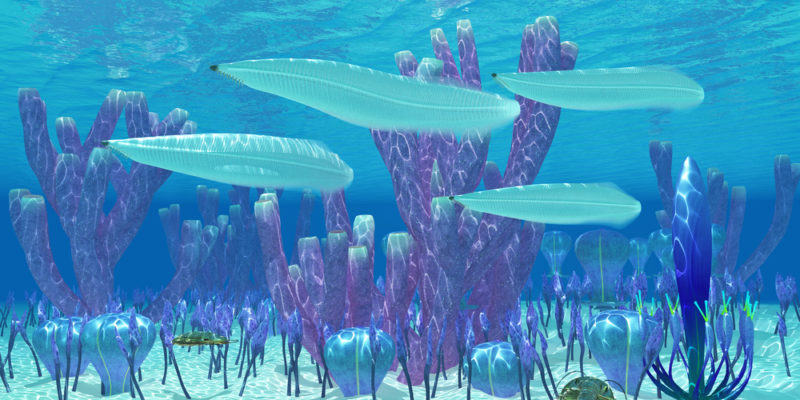
The Cambrian Evolutionary Radiation, also known as the Cambrian Explosion, was a sudden and enormous diversification of life that occurred in the Cambrian period, about 542-530 million years ago. Then many of the primitive ancestors of contemporary life forms appeared.
These organisms were the first macroscopic forms of complex multicellular life . Of the 20 known species phyla, at least 11 come from this phenomenon. At some point it was thought that it was contrary to Darwin's theories on natural selection, although today we know that this is not the case.
The exact causes of the Cambrian Explosion are unknown for certain. There are various theories that have to do with the abundance of atmospheric oxygen , the geological reconfiguration of the moment or ecological competition.
The hydrocarbon formation
In the Carboniferous , the large mineral coal deposits were formed, which were then exploited by humans during the Industrial Revolution , as an energy source.
The origin of these resources is found in the enormous proliferation of plant life in that period . Due to the accumulation of plant matter, bacteria and molds could not decompose it in time, allowing it to fossilize and be covered with layers of earth.
The Permian-Triassic Mass Extinction
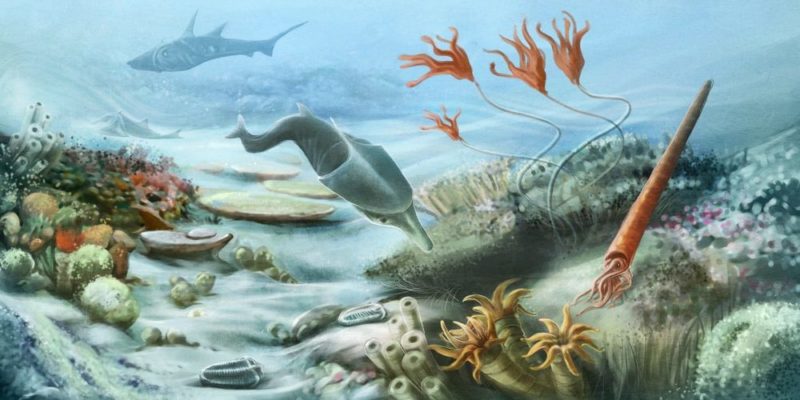
The final event of the Paleozoic Era is known as the Permian-Triassic Mass Extinction or "The Great Dying." It is the largest extinction event in the history of the planet.
A high percentage of life (70% of the terrestrial and 95% of the marine) disappeared in the transit towards the Mesozoic Era. As a consequence, new forms of life were able to take advantage of the empty niches and proliferate, although it took a long time.
The causes of this mass extinction are unknown . However, the hypotheses point to sudden and severe climatic changes that prevented the species from adapting effectively.
Later era: the Mesozoic Era
The Mesozoic Era lasted 186 million years , during which the world was under the rule of the dinosaurs . That is why it is known zoologically as “The Age of the Dinosaurs”. In the plant field, the cycads stood out, which is why it is known botanically as "The era of the cycads".
It had its beginning approximately 251 million years ago , and its culmination 66 million years ago. It is divided into the Triassic , Jurassic , and Cretaceous periods .
The above content published at Collaborative Research Group is for informational and educational purposes only and has been developed by referring reliable sources and recommendations from experts. We do not have any contact with official entities nor do we intend to replace the information that they emit.
Abubakr Conner brings a diverse skill set to our team, and covers everything from analysis to the culture of food and drink. He Believes: "Education is the most powerful weapon that exists to change the world." .
Leave a reply
Your email address will not be published. Required fields are marked *Recent post

Sport: What Is It, Types, Risks, Features, Characteristics and Examples

Dogs: Emergence, Features, Characteristics, Feeding and Breeds

Story: Definition, Elements, Structure, Features and Characteristics

